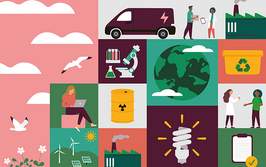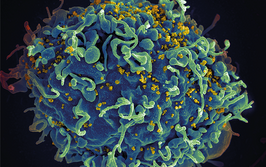Cheers to UHPLC!
Rainer Bauder raises a glass to more reproducible, more efficient, and more productive analytical workflows in the beverage industry.
Rainer Bauder |
sponsored by Thermo Fisher Scientific
I started working with (high performance) liquid chromatography in the early 1990s, and there have been some serious changes since then. For me, the emergence of better software has been key – both in terms of instrument control and the acquisition and processing of data. It’s really changed the way people work. The focus has shifted from simply acquiring the data to doing more sophisticated data analyses and archiving. Notably, the advances in software coincided with regulatory changes, with good laboratory practice (GLP) and good manufacturing practice (GMP) filtering down from the pharmaceutical industry into the food and beverage markets.
Today, there are more regulations and accreditation requirements than ever before in the food and beverage market. To me, this is an acknowledgement of the fact that, in an increasingly global market, authenticity and correct label claims are paramount. Indeed, correct and compliant label information has become a key aspect in satisfying a more educated and interested consumer community.
Smart software also brought with it the opportunity to do more automation. In the 1980s and 1990s, manual injection systems were commonplace. Nowadays, almost all industrial HPLC setups use autosamplers and automated injection devices – that not only means reduced operator time and higher throughput, but also an increase in reproducibility.
If we look at the beverage industry specifically, there have been a couple of shifts that have altered the focus of analysis. First, there was a move from traditional products to more ‘designed’ products – and the subsequent introduction of additional coloring, flavoring and preservatives. More recently, I sense a shift towards more naturally sourced or even organic coloring and additives to meet the demands of more content-aware consumers. To that end, the analytical efforts on initial design of beverage products, as well as continued quality control, have been ramped up. After all, more complex products demand more complex analysis; raw material testing has become more challenging because of the increased diversity of compounds and more intense because of the need for authenticity testing.
With more components to monitor and the not-insignificant challenges of authentication, technological advances in HPLC – in particular, the birth of UHPLC – have been a boon to the beverage industry. Indeed, UHPLC offers gains in efficiency and productivity that cannot be ignored by routine labs in this space. Other advances have seen sample preparation or cleanup move away from the bench and into (U)HPLC instrumentation.
Bottoms up
In some ways, the beverage industry should be at the cutting edge of routine analytical workflows; with easier matrices to work with than its cousin, food analysis, and less hampered by regulation than the pharma industry, beverage analysis is well-positioned to take advantage of automation and efficiency advances. But as with many industries, cost is an issue – particularly in manufacturing, where internal quality control can eat into the bottom line.
Nevertheless, where safety is concerned, beverage producers (and the contract analytical labs that support them) have been very keen to embrace new technology that i) reduces cost of analysis (through increased throughput) and/or ii) increases confidence in the results, to avoid costly complications. Here, the very standard methods routinely employed for contaminant analysis (for example, pesticide analysis) can be made more efficient and reproducible through modern (U)HPLC systems. I don’t think there is any doubt that general improvements in the quality of instrumentation (which is an inherent attribute of UHPLC) have clearly brought increased assay consistency – and, of course, such an advantage is not limited to the beverage industry.
In our latest Vanquish UHPLC platform, we have introduced a number of advances that have a real impact on assay reproducibility, by making retention times and elution profiles highly stable – which in turns simplifies data processing. How is the Vanquish platform able to lead the way in this regard? For one, by using smarter injection technology; the sample is pre-compressed before injection, which prevents pressure drop or pressure shock, making the flow more continuous. And we’ve also introduced more advanced technology to control the temperature of the column, which has a real influence on both elution time stability and peak shape.
In the past, striving for gains in instrument performance through an upgrade to UHPLC tended to result in a headache for method development teams – a blocker for many. And that’s why we’ve also spent a great deal of time working on method transfer tools that ease the process dramatically.
Automation, much improved instrument quality, and more advanced software tools are all readily available nowadays – I could have only dreamt of such things back when I started in the 1990s. It’s never been easier to benefit from better chromatography.
Rainer Bauder is HPLC Solution Manager at Thermo Fisher Scientific.
HPLC Solution Manager at Thermo Fisher Scientific.

















